My Working Methods...
I tend to work in concentrated bursts, especially when I am on a deadline, when I work round the clock. But I work every day during office hours for at least 7 or 8 hours, when not engaged in displacement activities, like searching for lost glasses or cups of tea that have gone cold. When I’ve finished a long book, I need a couple of weeks to clear my head and catch up with all those boring tasks I never had time to do while I was on another planet, like paying bills. Life tends to catch up with you.
Before I start work I usually take the dog for a walk. I live in the country where there is lots of wildlife, which is very inspiring. Ducks, deer, swans, herons, pheasant, kingfishers, rabbits, foxes and the odd sabre toothed tiger. (Joke!)
Whether I’m writing a book or a short story or a TV script, I NEVER start writing the actual story without plotting and planning it first. This is the first rule of storytelling. If you start writing willy nilly, making it up as you go along, before you’ve worked out what’s going to happen in the story, you run out of steam and get lost! It’s like going on a journey without a map. You have to draw your own map. Story writing is also a bit like designing a building, or a car. You have to build the foundations and design the structure, because it’s like a machine with working parts, and no story works without proper structure. And your characters have to be designed for that story, as each one has a job to do in the story – it’s called dramatic function in the trade.
Television
For TV work, you’re usually made to do a beat outline first, which is all the main events of the story, listed like a shopping list. Then you expand it to a treatment, which is more fleshed out. Then you start scripting. You will do several drafts at each stage and it builds up gradually. TV producers and script editors are usually very strict about this, as they have tight schedules and all the episodes have to slot into place. They also like to monitor the progress of the story development.
Books
For novels I usually have two or three editorial meetings along the way to discuss the way the story is going with my editors. I do a chart of the events in the story on 3 big pieces of paper. In each box I write what is happening in each chapter, so I can navigate round the story and see at a glance what happens, when, where and with whom. It is literally a map of the story.
I tend to work in concentrated bursts, especially when I am on a deadline, when I work round the clock. But I work every day during office hours for at least 7 or 8 hours, when not engaged in displacement activities, like searching for lost glasses or cups of tea that have gone cold. When I’ve finished a long book, I need a couple of weeks to clear my head and catch up with all those boring tasks I never had time to do while I was on another planet, like paying bills. Life tends to catch up with you.
Before I start work I usually take the dog for a walk. I live in the country where there is lots of wildlife, which is very inspiring. Ducks, deer, swans, herons, pheasant, kingfishers, rabbits, foxes and the odd sabre toothed tiger. (Joke!)
Whether I’m writing a book or a short story or a TV script, I NEVER start writing the actual story without plotting and planning it first. This is the first rule of storytelling. If you start writing willy nilly, making it up as you go along, before you’ve worked out what’s going to happen in the story, you run out of steam and get lost! It’s like going on a journey without a map. You have to draw your own map. Story writing is also a bit like designing a building, or a car. You have to build the foundations and design the structure, because it’s like a machine with working parts, and no story works without proper structure. And your characters have to be designed for that story, as each one has a job to do in the story – it’s called dramatic function in the trade.
Television
For TV work, you’re usually made to do a beat outline first, which is all the main events of the story, listed like a shopping list. Then you expand it to a treatment, which is more fleshed out. Then you start scripting. You will do several drafts at each stage and it builds up gradually. TV producers and script editors are usually very strict about this, as they have tight schedules and all the episodes have to slot into place. They also like to monitor the progress of the story development.
Books
For novels I usually have two or three editorial meetings along the way to discuss the way the story is going with my editors. I do a chart of the events in the story on 3 big pieces of paper. In each box I write what is happening in each chapter, so I can navigate round the story and see at a glance what happens, when, where and with whom. It is literally a map of the story.
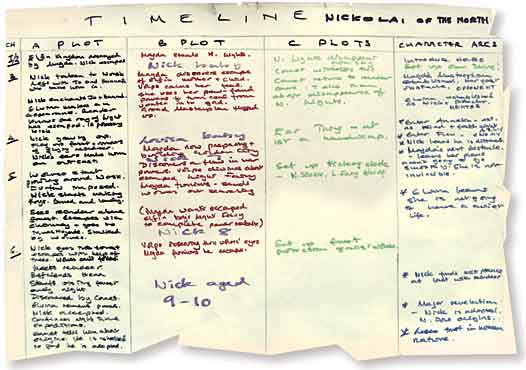
A typical book plan chart
I put it up on the wall and surround it with maps, pictures from my background research off the internet and my own sketches of the characters, for visual reference. (NB they are my own personal working sketches, not the ones that are used in the final book cos I ain’t good enough!) I find sketching my characters a good way of bringing them alive.
Character sketches. Caption: Some of my character sketches from Nick 2
I also draw a map of the place where the story is set and put that in middle of the wall to orientate myself.
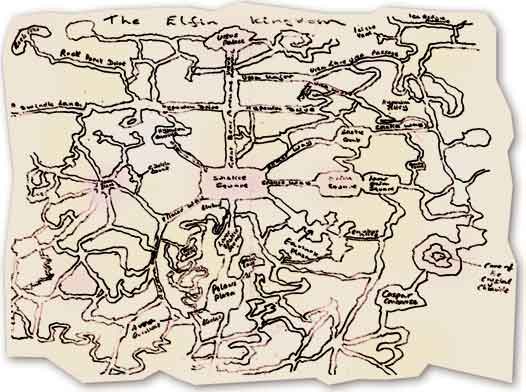
Map of the Elfin Kingdom so I knew where I was going
So I have the whole book mapped out on the wall while I’m writing it, like in an operations room of some wartime movie. It’s my guide. I also write a synopsis , or chapter outline of the story first, and this is my main working document. I tick off each section as I go.
As I print off each chapter, I edit it, scribble on it and re-write it several times until it is in reasonable shape, then add it to the box file, where each chapter is clipped together, with a post it note stuck on the side to index title, number and length in pages. This is how I build up the manuscript.
If I ever get stuck, I do a bit of research on the internet to stimulate ideas, or play around with brainstorming ideas jotted down on cards, or I phone my editor for a chat. Usually we solve the problem just by talking it out.
Both Nickolai books ran to three main drafts on my machine. Most of the re-writing work gets done on the 2nd draft, when characters get removed and replaced and the sequence of events is re-jigged. After 3rd draft it goes onto hard copy, for further changes and edits, and then off to the printers to the galley proof stage. I make further changes and corrections on the galley proofs. Meanwhile the cover illustrations have been done and the inside illustrations are briefed out (we select the best passages to be illustrated) and I look at the roughs with my editors before they get finished up.
You are much more involved in the production process as an author than you are in TV, where the script goes off and other people take it from there. You feel a lot more part of it and in control, because it’s your story. TV is a collaborative medium and other people get involved. Both processes are very exciting, and it’s nice to see your book in print, or to watch actors speaking your lines and to see your name on the screen.
Creativity has to be disciplined
Writing is a very experimental process, and you’re constantly changing things as you go along. It’s an organic, evolving thing, known in the trade as development. (In some cases ‘development hell.’)
Writing is something you need to learn how to do, to be trained in. You can’t teach someone to have talent or imagination, but you can develop and train that talent. Creativity has to be disciplined! Writing is a professional skill that has to be acquired, just like acting, singing, dancing, music and art. I do go on courses, but I have mostly learnt on the job, from producers, script editors and book editors.
Most important of all, writing is about RE-WRITING! You have to be prepared to keep changing and improving, tinkering and moving, erasing and replacing, experimenting with all the creative options till you get the best possible result. That’s how you learn and that’s how you get better at it.
It’s hard work, but it’s fun! Check out the School Visits section to see how I work with children in schools, showing them my working methods and helping them write their own stories in group workshop exercises. I also teach adults and this is covered too.
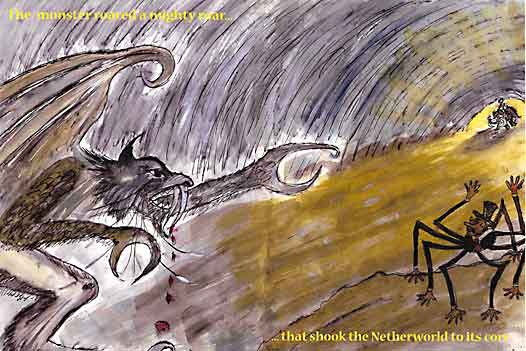
My first impressions of Grimgor!
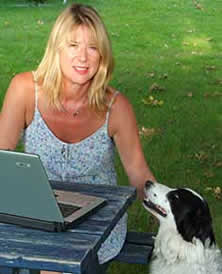
"Before I start work I usually take the dog for a walk"
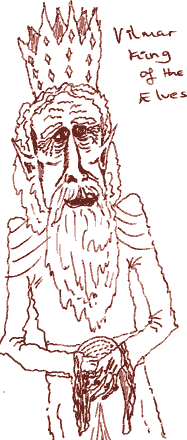
Some of my character sketches from Nick 2 inspired by steam patterns on my bathroom wall
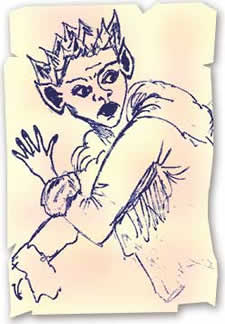
"I would love to illustrate my own books but I am not good enough yet!"
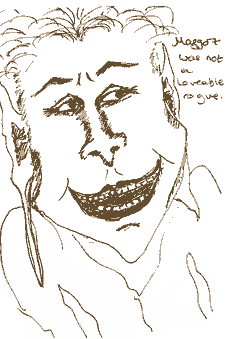
A spare character who will hopefully will appear in Nick 3!
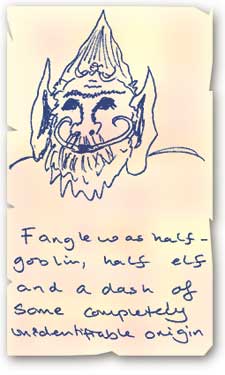

© Lucy Daniel Raby 2020. All rights reserved. Design: rbgraphics.co.uk